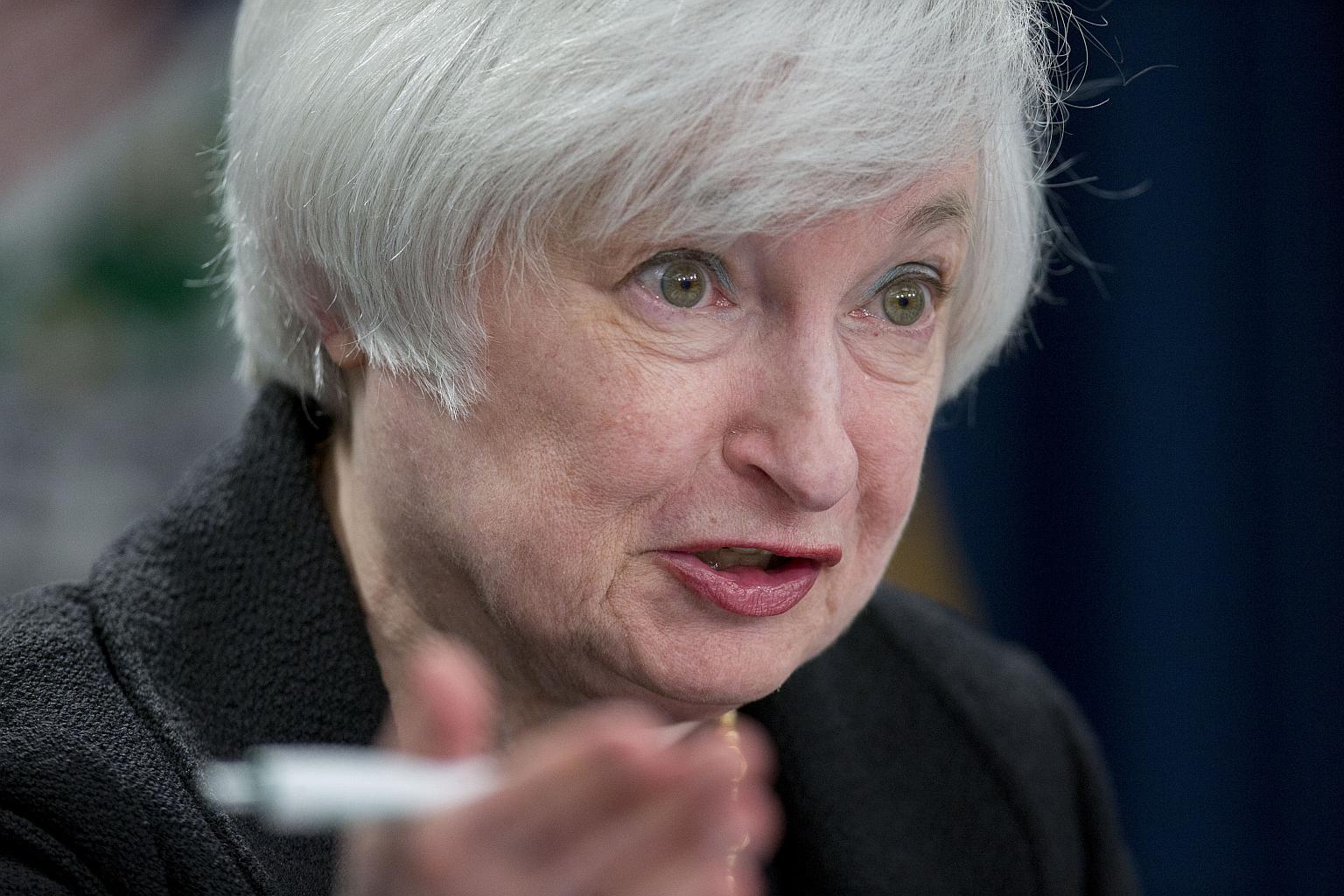New era for currency volatility because of Fed shift, says Morgan Stanley
Sign up now: Get ST's newsletters delivered to your inbox

Janet Yellen, chair of the US Federal Reserve, speaks during a news conference following a Federal Open Market Committee (FOMC) meeting in Washington, D.C., US, on Sept 17, 2015.
PHOTO: BLOOMBERG
Follow topic:
NEW YORK (BLOOMBERG) - Foreign-exchange volatility, already the highest in four years, looks set for an extended stay after the Federal Reserve rattled markets last week by not raising interest rates.
With the central bank leaving the question of when it will move hanging over markets, its focus on economic data and international circumstances means every report will stir more volatility, according to Morgan Stanley.
Fed chair Janet Yellen says she's monitoring risks from China, while central banks in Europe and Japan weigh further stimulus as the Fed looks to raise US rates for the first time since 2006.
"Volatility continues as they continue to inject uncertainty into the marketplace," said Greg Peters, a senior investment officer at Prudential Financial Inc.'s fixed-income unit. "The constant threat and overhang of their hiking is far worse than hiking on so-so data. And, let's be honest, international events and market disruptions are always out there."
The central bank's bid for greater transparency about its criteria for a rate increase has left markets twitching with every economic report amid an expanding Fed checklist and conflicting US data. Policy makers kept rates unchanged last week and suggested a slower path to raising them, as inflation trails the Fed's target even amid labor-market gains.
JPMorgan Chase & Co.'s gauge of global currency volatility rose to 11.3 per cent on Sept. 7, the highest since February, as traders pondered whether the Fed would raise rates 10 days later. The index has averaged its highest since 2011 this year even as the Fed hasn't changed policy.
Traders are entering "a new era" for currency volatility, according to a Sept 17 report from Morgan Stanley. Data dependence by the Fed, declining currency reserves and regulatory changes mean elevated price swings will characterize the US tightening cycle more than in the past, the bank's New York-based analysts Calvin Tse and Evan Brown wrote. Morgan Stanley favors buying options betting on volatility in the pound.
While higher volatility can be a boon for currency traders, who can get better returns during more pronounced price movements, corporations may find it more difficult to hedge against exchange-rate swings.
Policy makers have long stated that the timing of any rate increase will depend on a variety of economic data. In its latest policy statement, the Fed flagged a new consideration - "recent global economic and financial developments" - that may also keep trading choppy. Ms Yellen said last week that the Fed would scrutinize slowing growth in China and emerging markets for risks that could spill over to the US
"What markets will be focused on is not only US inflation but inflation around the world and growth around the world," Rick Rieder, chief investment officer for fixed income at BlackRock Inc., the world's largest money manager, said at a press event in New York on Sept. 18. "You'll see more volatility going forward in FX."
Central banks that would benefit from weaker currencies versus the US dollar, such as Europe or Japan, may ease policy further if the Fed continues to hold, adding to uncertainty.
Atlanta Fed President Dennis Lockhart said on Monday that while recent market volatility raised risks to the U.S. economic and inflation outlook, he remains confident that policy makers will raise rates this year. Even if they do, it may not calm markets.
"As soon as they hike once, the question is going to be how quickly do they hike again, and again, that's going to be determined by the data," said Steven Saywell, London-based global head of foreign-exchange strategy at BNP Paribas SA. "Volatility will probably increase."

